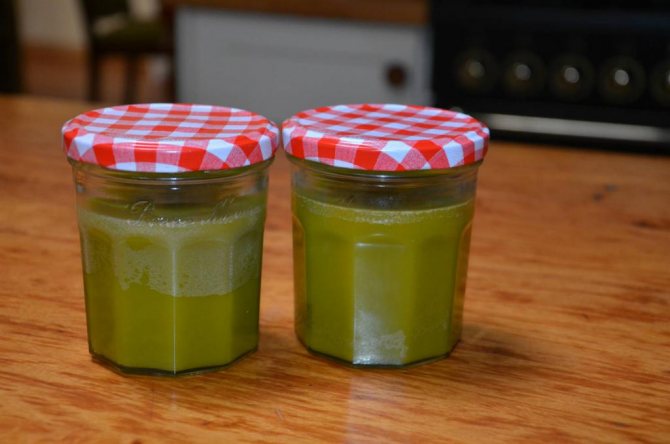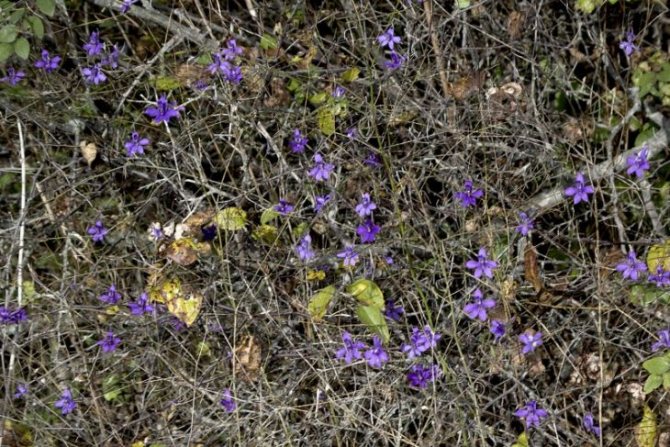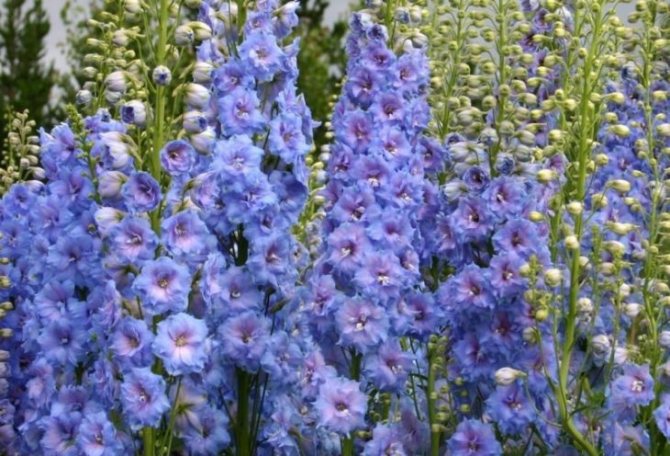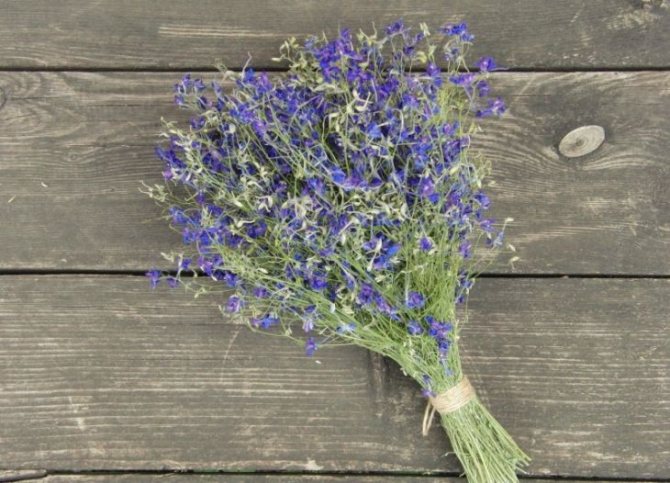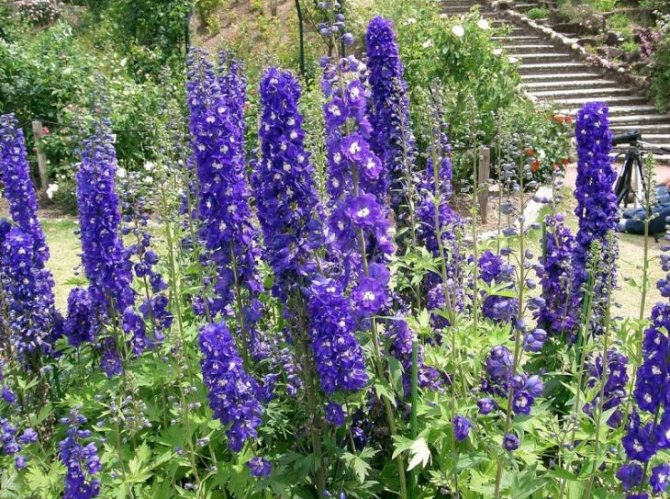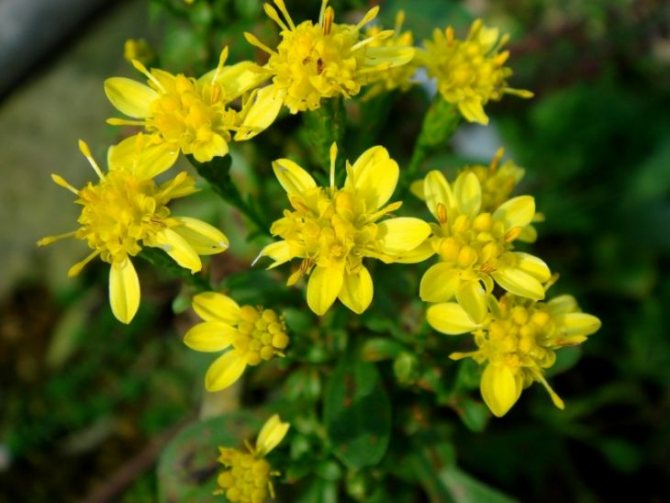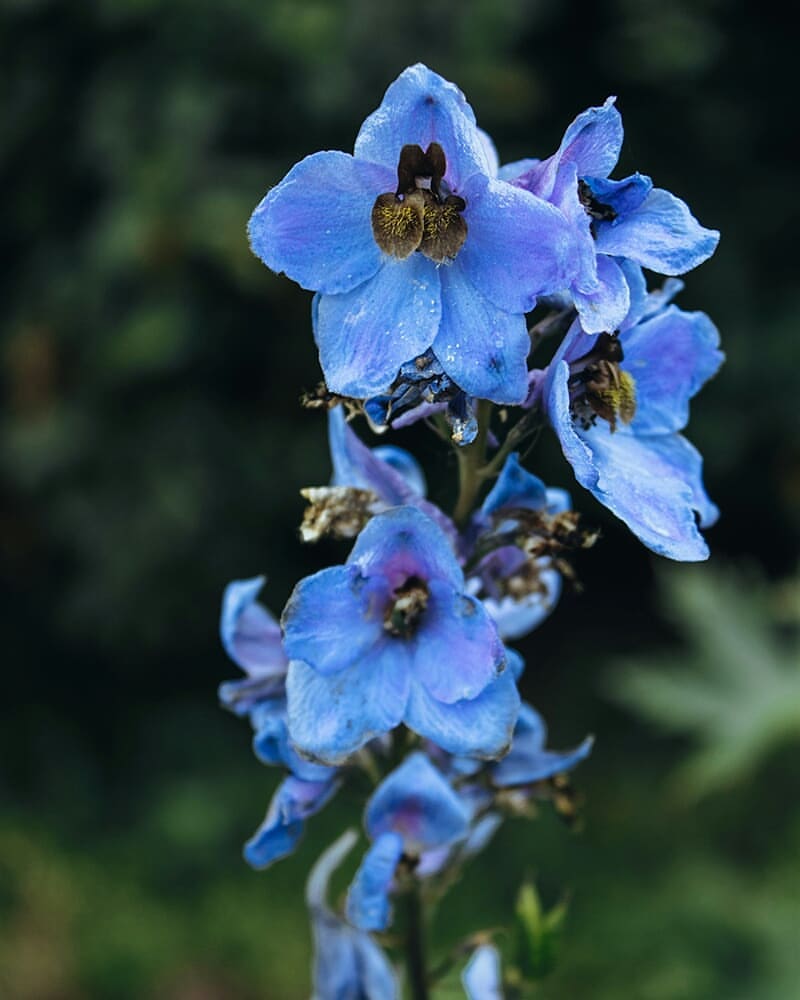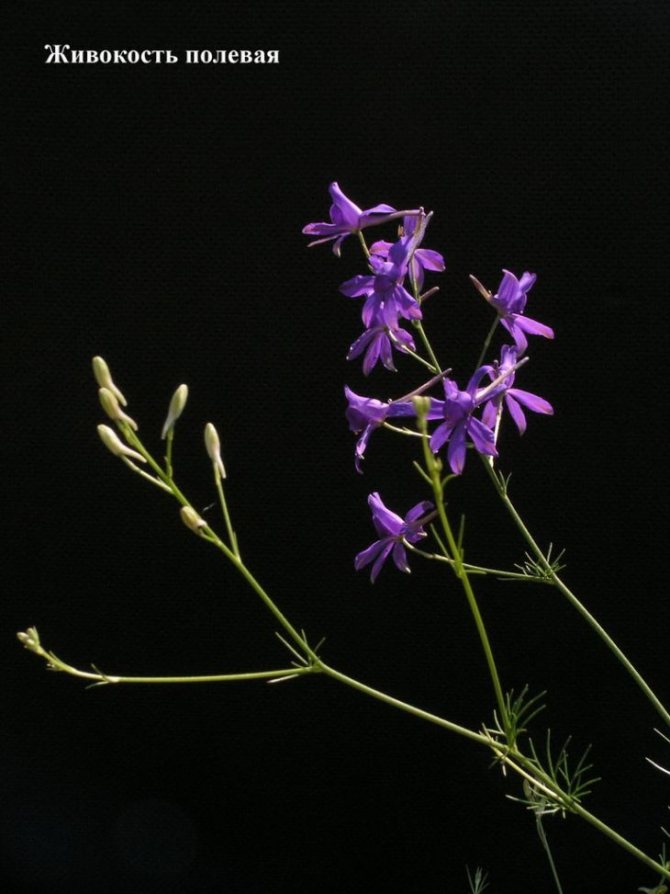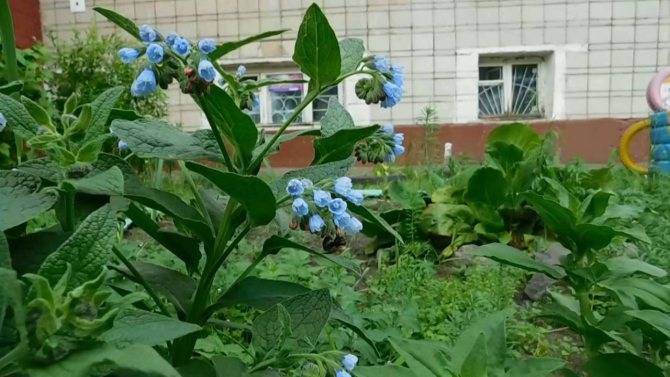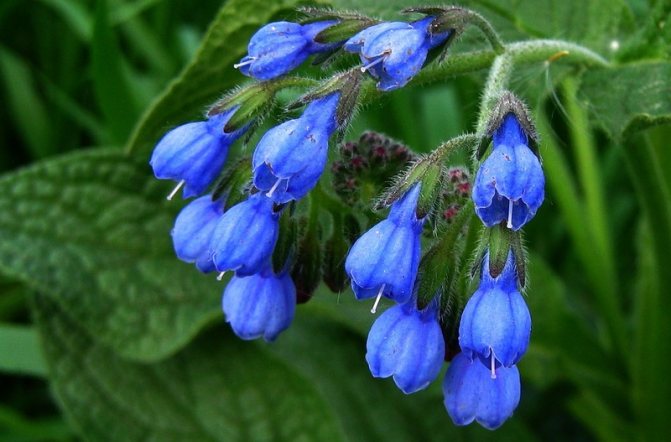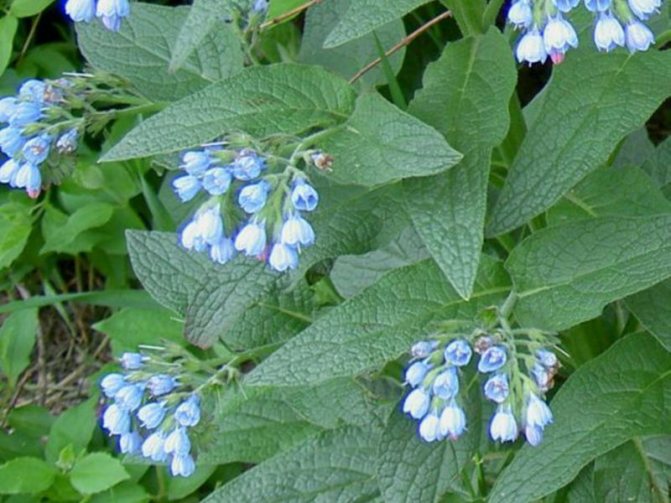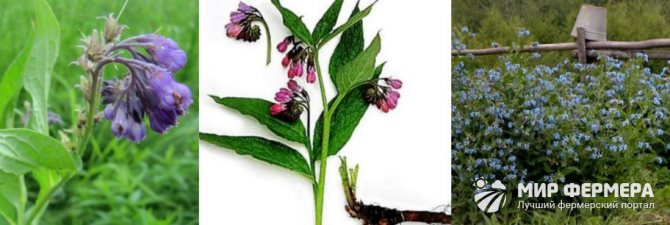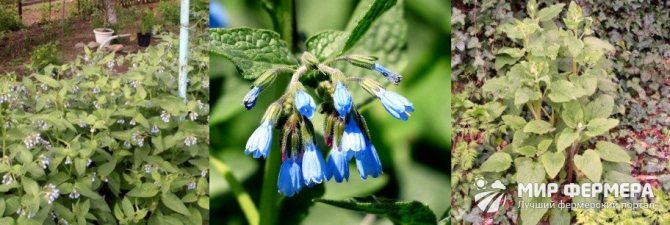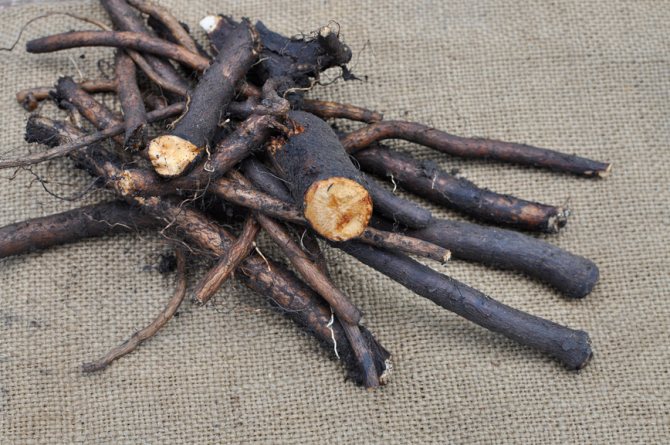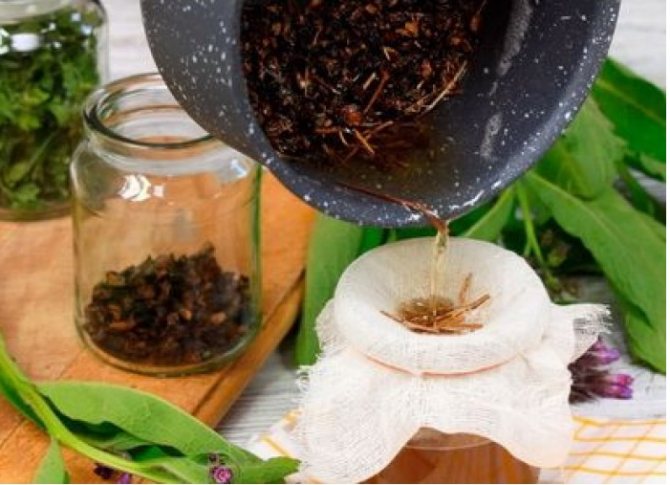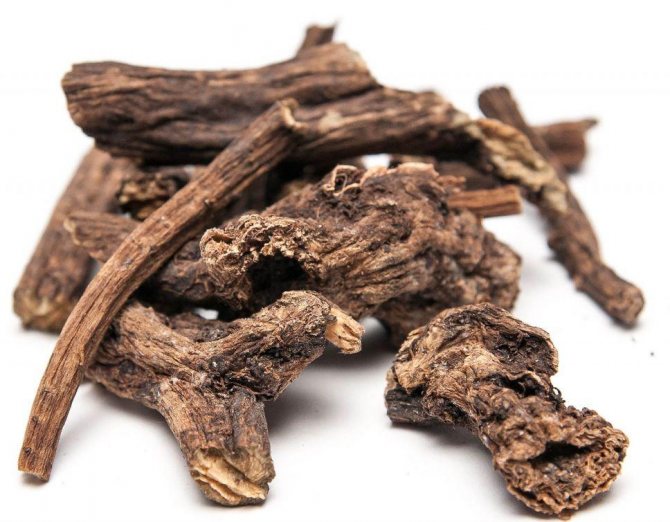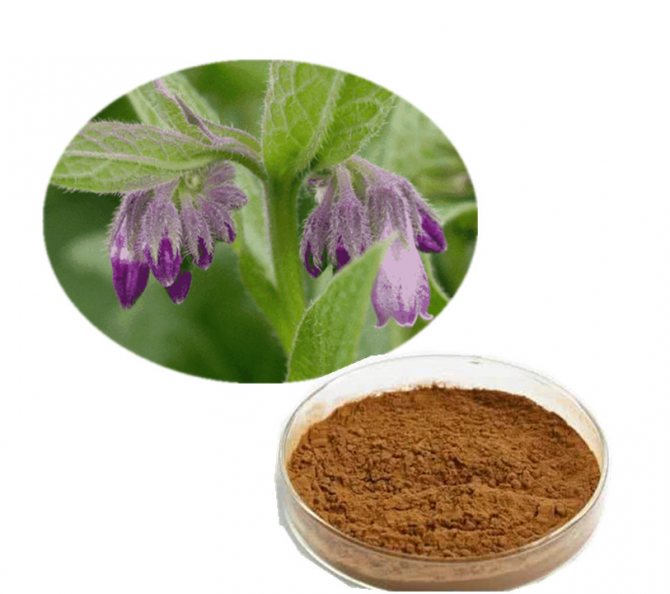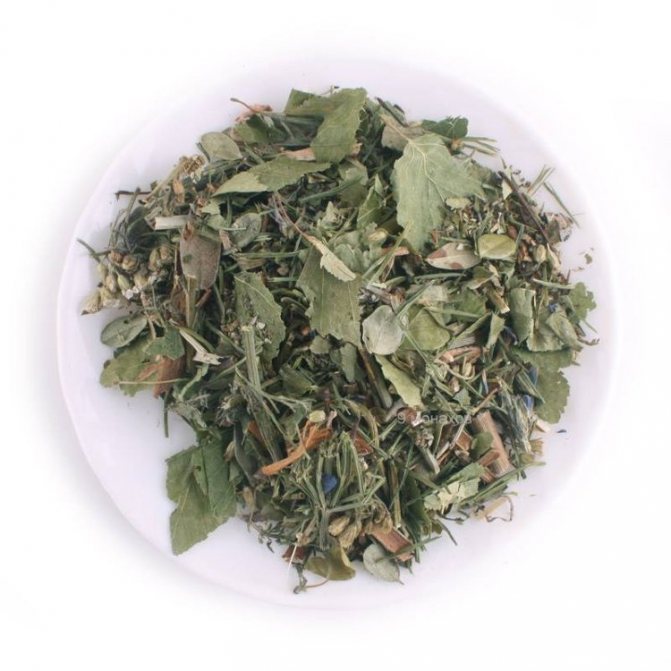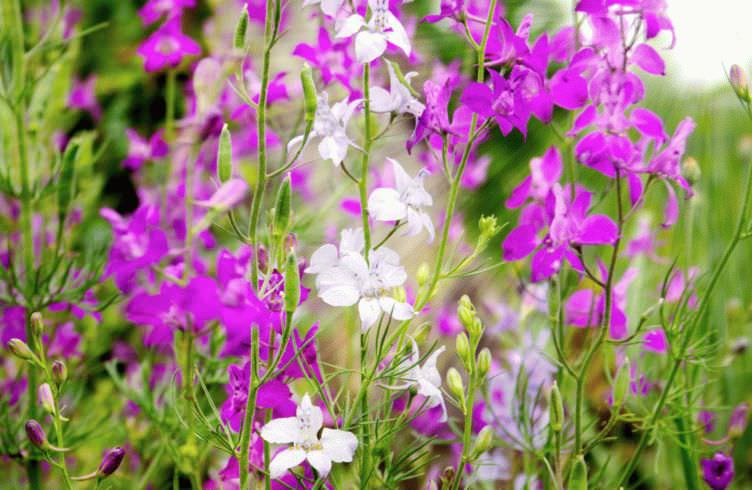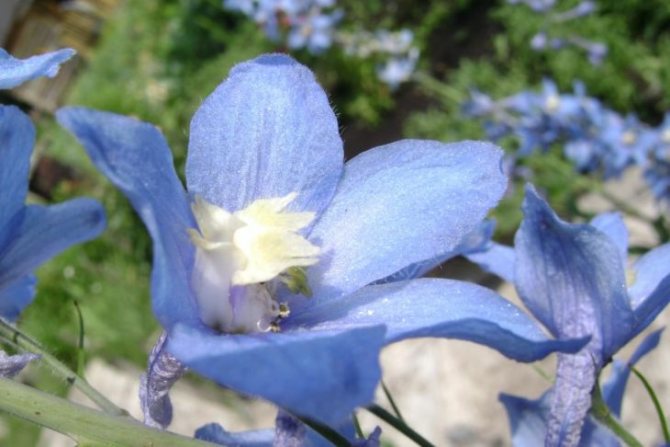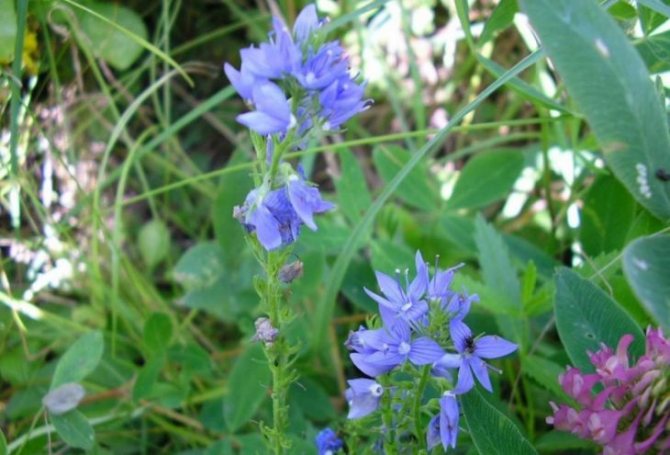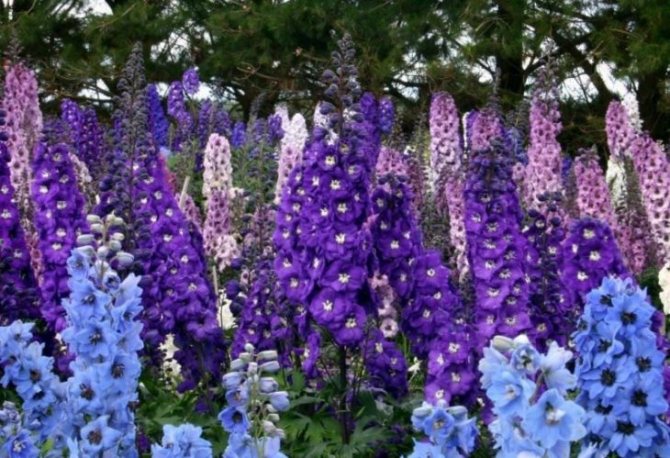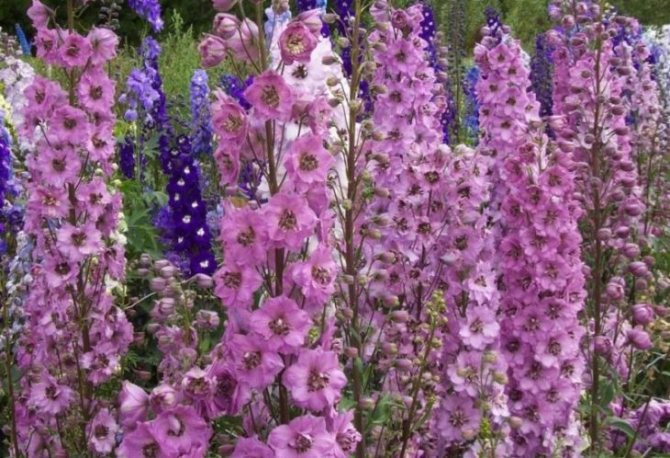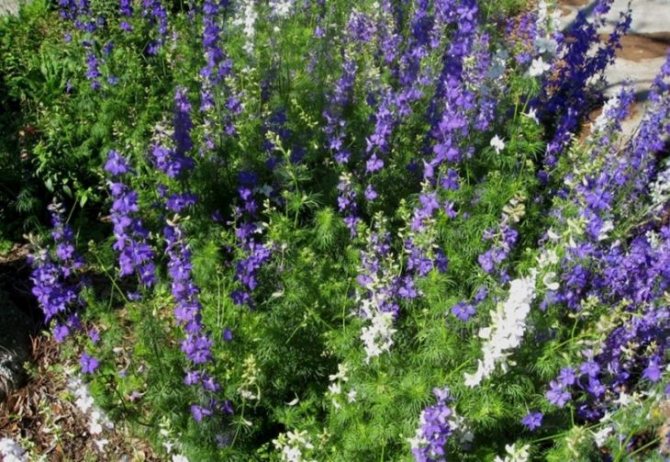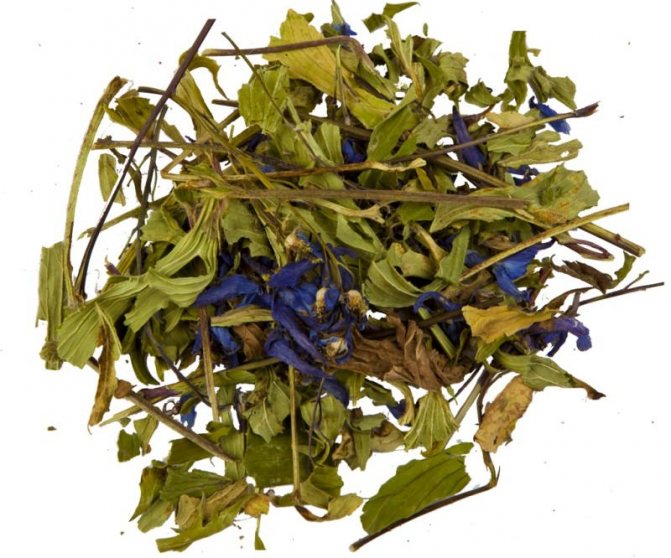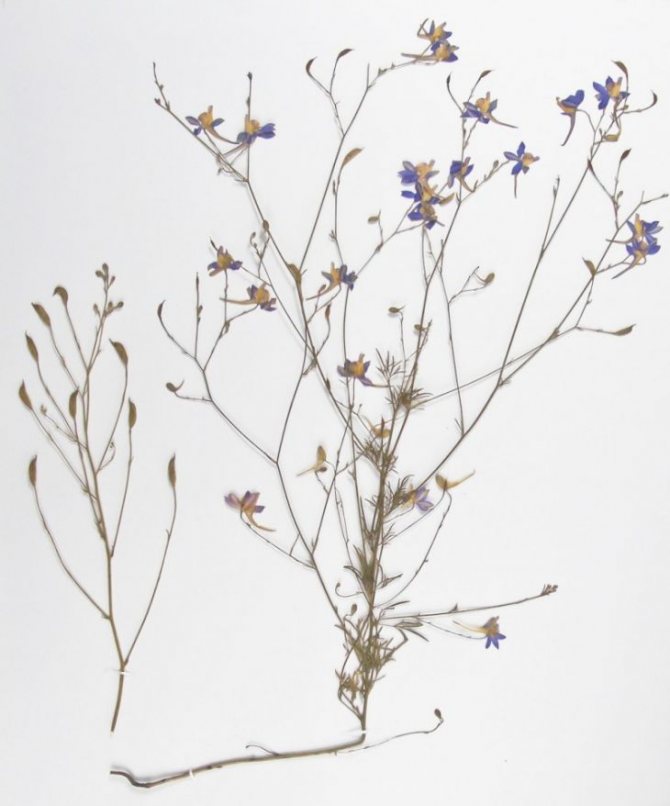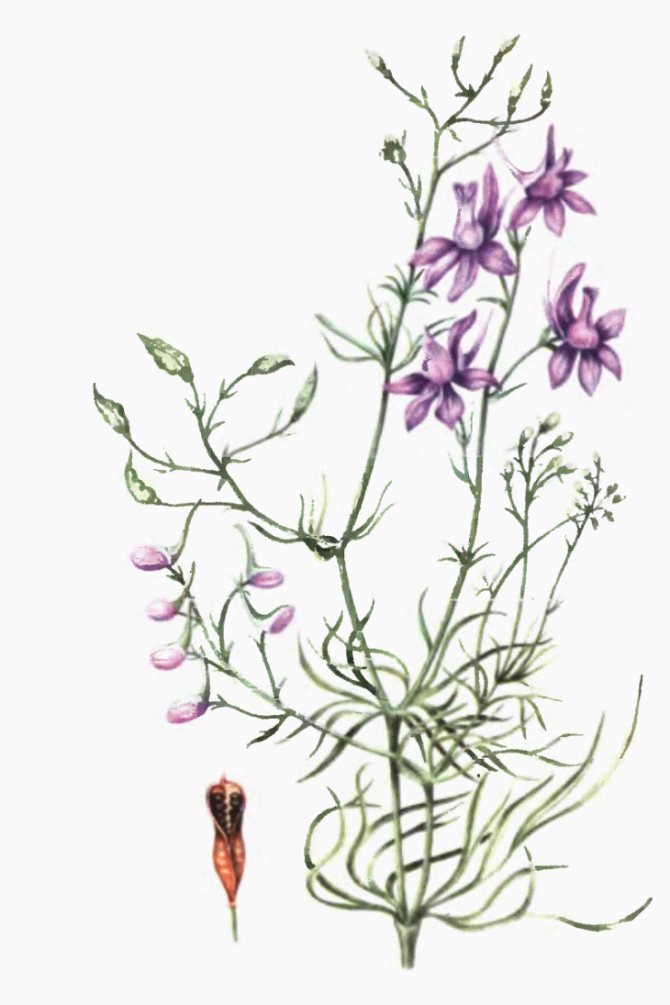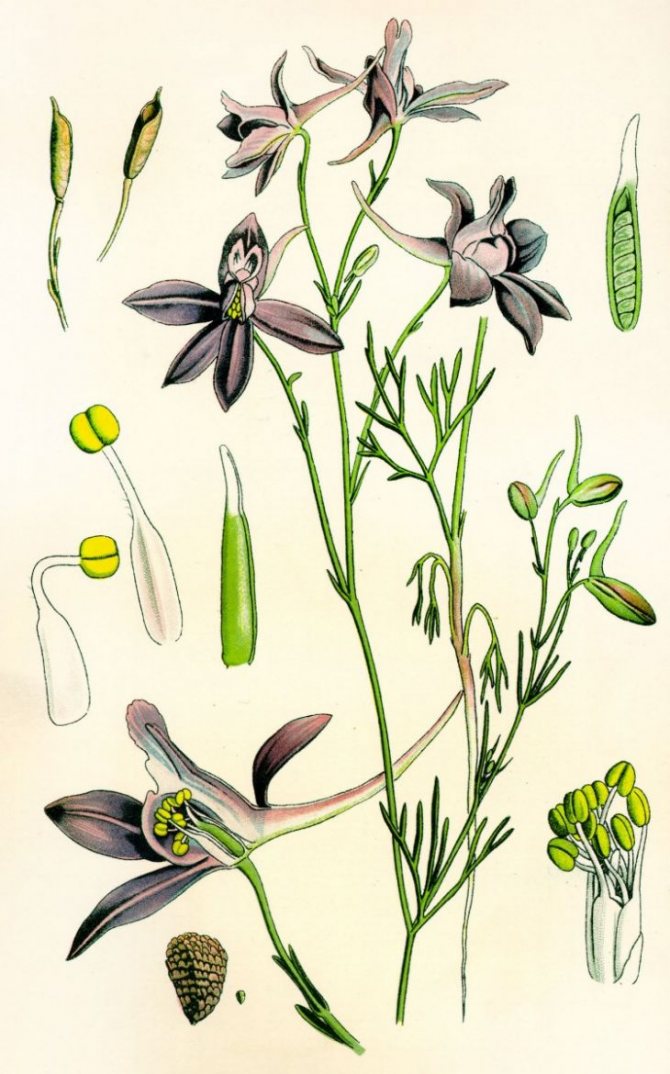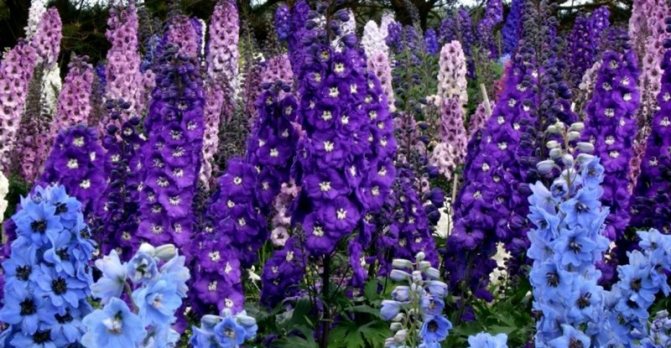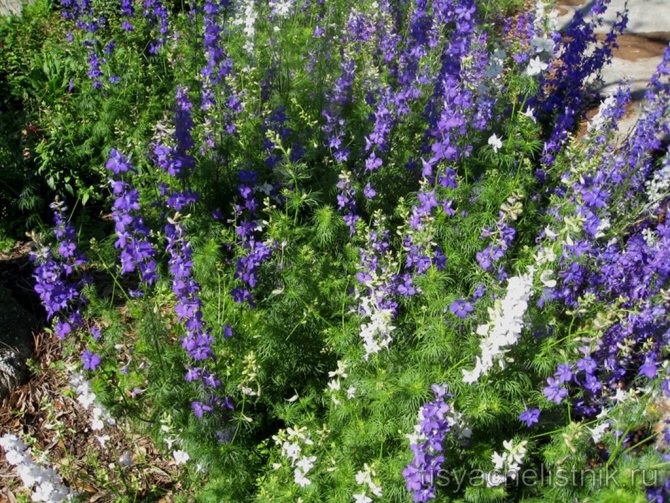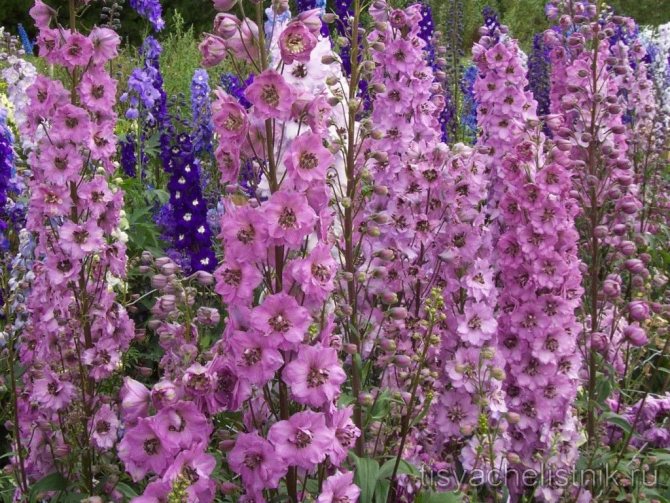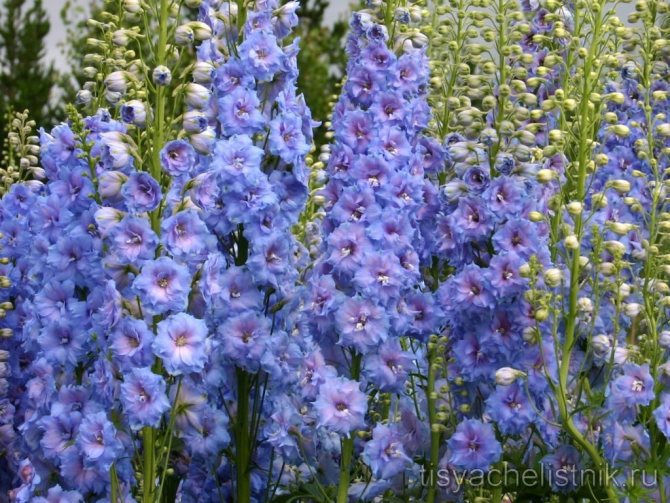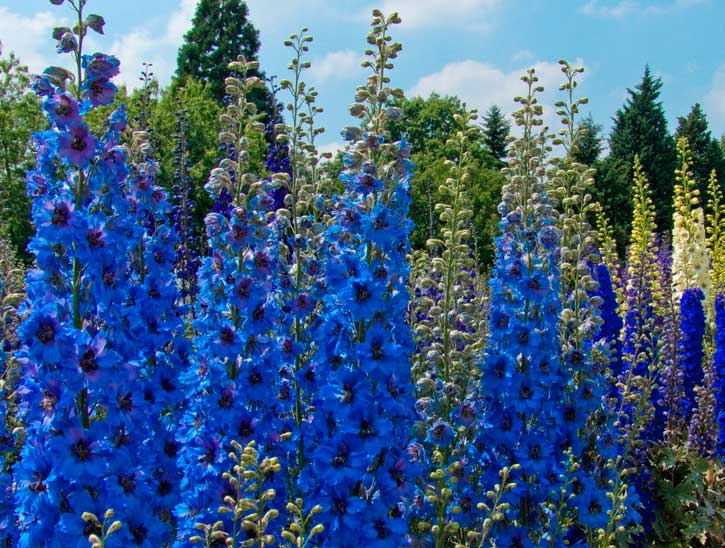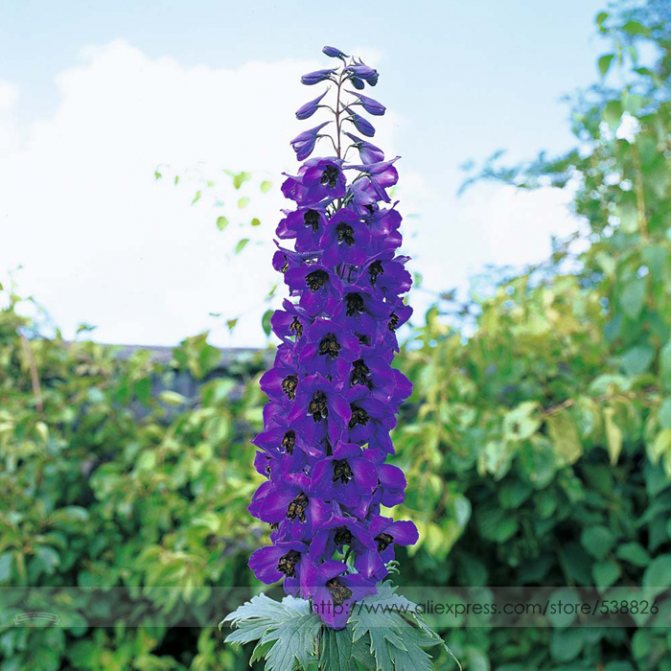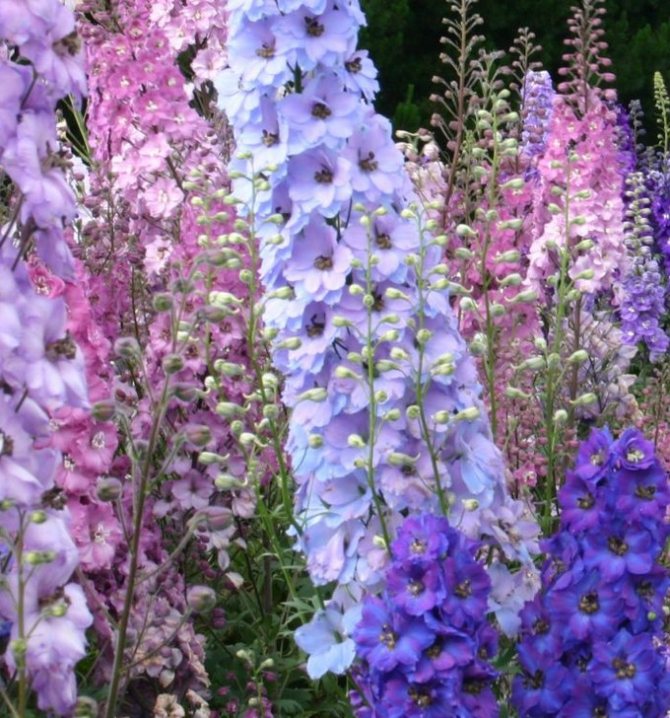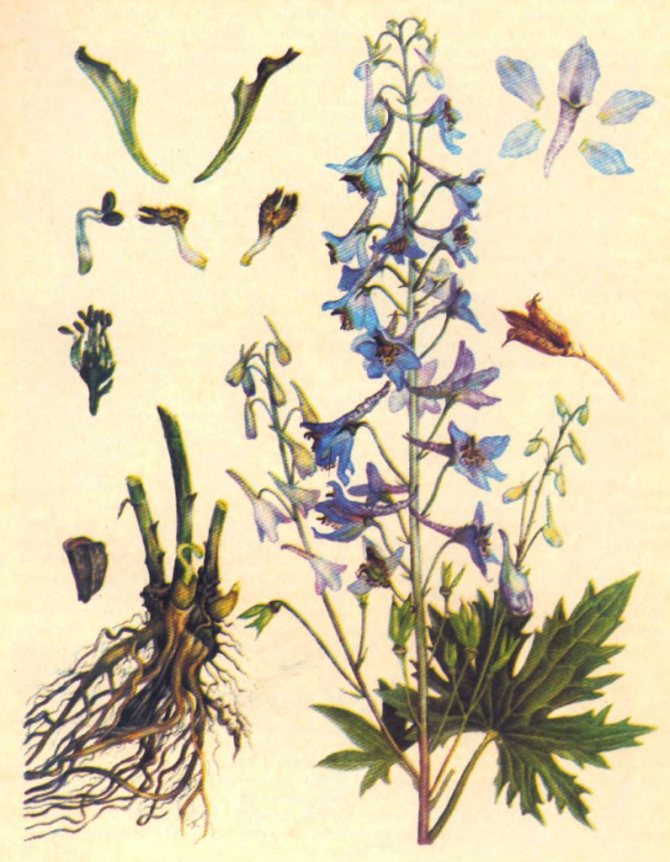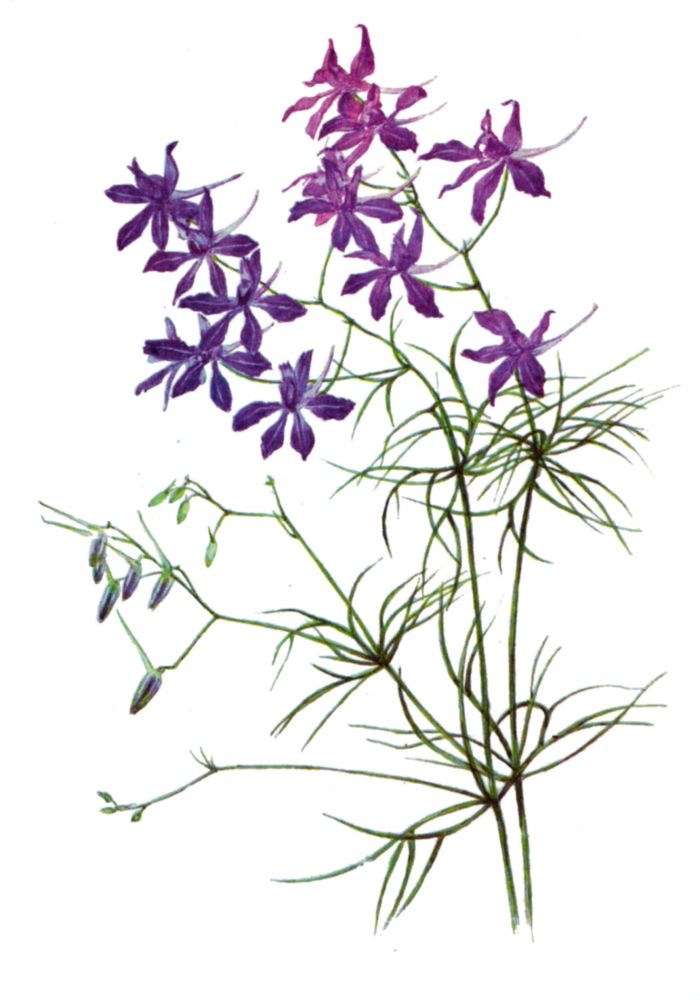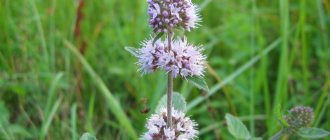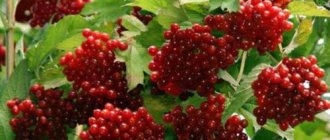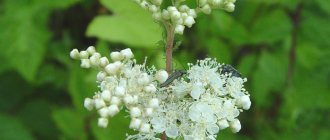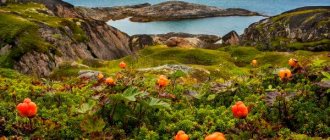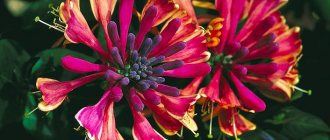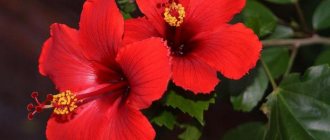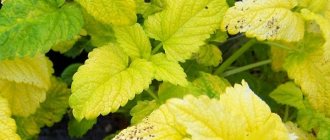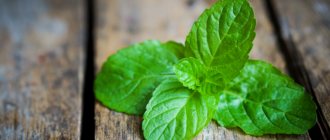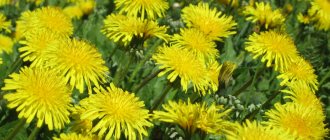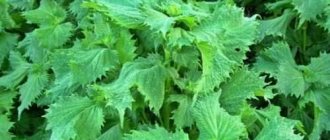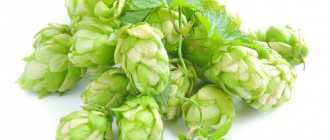Comfrey officinalis (Symphytum officinale) is a fast-growing perennial up to 1.5 m high with inflorescences of drooping bell-shaped flowers of white, pink or purple color. It has a short rhizome and a thick fleshy root that goes deep into the ground. A solution made from comfrey leaves rotted in water is an excellent organic fertilizer for vegetable plants.
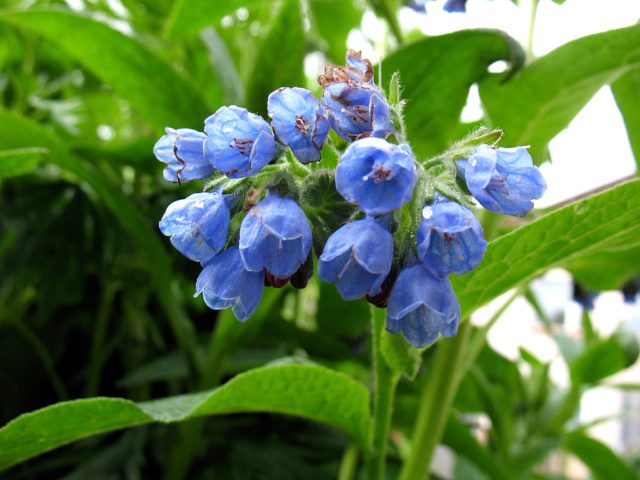
Comfrey
Comfrey large-flowered (S. grandiflorum)
Decorative groundcover with cream flowers.
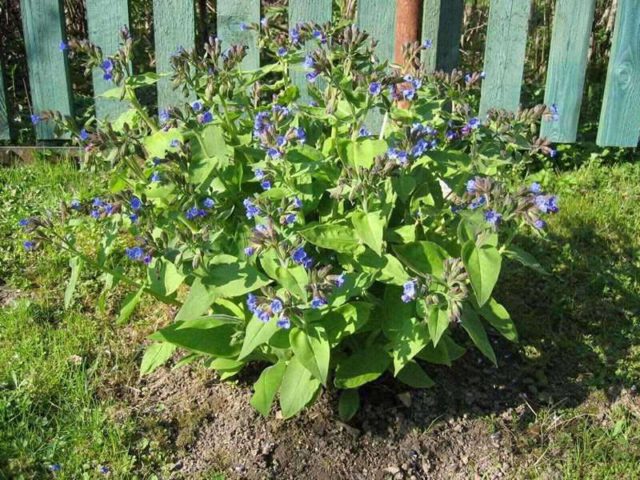

Comfrey large-flowered
Comfrey hard (S. asperum)
The variety with purple or blue flowers is used in some places as livestock feed.
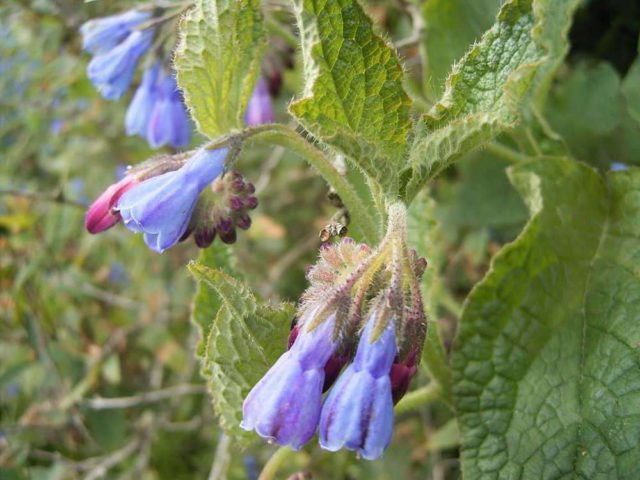

Comfrey hard
Comfrey has been used to treat bone fractures since the Middle Ages. In addition, its roots serve as a source of red dye for fabrics, and were previously used for tanning leather.
Parts used:
- leaves
- roots (rich in poisonous alkaloids)
Description of the plant with a photo
Orchard comfrey is well known to the owners of pharmaceutical gardens as a medicinal plant. Among the people, the name "larkspur" stuck behind them, which, however, should not be confused with the delphiniums of the same name. This name is almost more popular among the population than the botanical one. But even the Latin translation contains an indication of the healing properties of the plant, since it sounds like "growing together".
Comfrey belongs to the Burachnikov family, has a wide natural distribution throughout Eurasia, growing mainly along the banks of forest streams and rivers. It is a tall herbaceous perennial with high endurance. It has a powerful creeping root system, capable of penetrating to a depth of 2 m and providing the aboveground part with everything necessary in the most unfavorable growing conditions. Outside, the roots and their numerous processes are black, and inside is juicy white flesh, slightly greasy to the touch.
The plant awakens in early spring and retains its vitality and external decorativeness until the late autumn cold weather. It has erect, strongly branched, pubescent shoots.
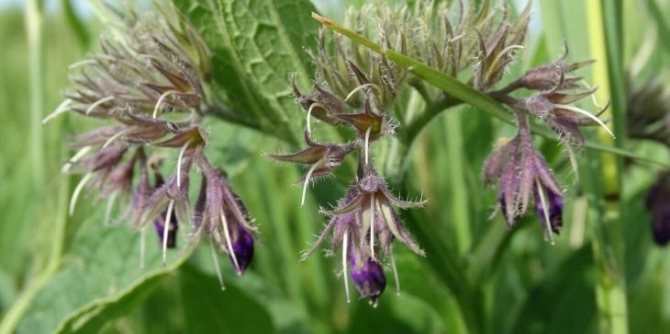

The leaves are very similar in appearance to the lungwort. Their shape is pointed or ovoid, the arrangement is alternate, the leaf plates look textured due to strong pubescence and pronounced venation on the seamy side. Leaf rosettes grow large and lush, look elegant, gradually forming voluminous and dense arrays. The sizes of comfrey of different varieties can vary greatly, from dwarf bushes 20 cm in height to meter and more giants.
Some species of comfrey retain some of their leaves in the winter.
Zhivokost for various diseases
In the case of osteoporosis, treatment is carried out according to the following scheme:
- Half a teaspoon of crushed larkspur is poured with water and insisted for a day, then diluted with half a liter of milk. The mixture is kept in the oven for three hours, then filtered and drunk one and a half teaspoons after each meal (three times a day). The course of therapy is one week.
- After one week, a tablespoon of cottage cheese or honey is added to the milk broth from the larkspur (the mixture from the first recipe). The mixture is eaten three times a day. Store the drug in the refrigerator.
For gout, joint discomfort, rheumatism and arthritis, an ointment is prepared. It will require fresh comfrey root, pork fat and Dimexide in the following proportions - 1 part, 2 parts and 0.5 parts, respectively. The agent is rubbed into the affected area three times a day, wrapped on top with a warm blanket.
For joint inflammation, a comfrey-based balm is used. In the pharmacy, you can buy a ready-made product; when using it, you need to carefully study the instructions. You can prepare the balm yourself:
- You will need a teaspoon of crushed comfrey roots;
- Raw materials are mixed with 10 teaspoons of fat (pork of any animal);
- The mixture is insisted for ten days, after which the product can be used.
Regular use of the ointment allows you to get rid of pain syndrome - back pain, with intervertebral hernias, with joint pathologies. Beeswax can be added to the ointment and used to combat toothache, heal wounds, and burns.


Comfrey tincture helps overweight people
To prepare it, you need the inflorescences and roots of the plant. As a result of taking the tincture, metabolic processes are normalized, thus, weight is normalized.
Cooking algorithm:
- 50 g of roots and inflorescences of larkspur are poured with half a liter of vodka or diluted alcohol;
- The mixture is infused for two weeks in a place protected from direct light.
Take the remedy ten drops twice a day. On the first day, 4 drops are drunk, then the dose is increased daily by 1 drop and the amount is adjusted to ten drops. In addition to normalizing weight, the patient feels a strong therapeutic effect, symptoms of liver, stomach and lung diseases disappear.
Comfrey honey helps with tuberculosis, as well as male and female pathologies. For cooking, you need a fresh root of the plant, rub it on a grater and mix with honey in a 1: 2 ratio. The mixture is taken in a teaspoon twice a day. The course of treatment is two weeks.
During pregnancy, the use of drugs from comfrey inside is prohibited. Biologically active substances can negatively affect the development of the fetus. External use of balms and ointments is possible in case of discomfort in the knees and back. Another contraindication to taking comfrey is children under 12 years of age.
What does a comfrey look like during flowering?
The comfrey flower has a bell-shaped type, the buds are collected in racemose inflorescences, which at first have a curved shape, and then straighten and take the form of drooping bunches by the peak flowering time. The color palette covers soft watercolor tones, mainly in lilac-blue tones. Within 2-2.5 months after flowering, a non-standard type of fruit is formed, which is a four-root. The seeds spill out quickly and ripen unevenly, which makes it difficult to collect them on their own. The situation is complicated by the fact that if you tie the inflorescence with gauze, then the fruits inside may not ripen.
Larkspur root compress
Any injury that damages tendons, joints, and muscles can be treated with a comfrey root gruel compress. The procedure is indicated for dislocations, fractures, bruises and sprains. Also, the compress helps with inflammatory processes that occur in the muscles and tendons.
The cooking algorithm is as follows. It will take from 50 to 100 g of comfrey root powder - its amount is determined by the area of the affected area. The raw materials are poured into a bowl, poured with boiling water and 3-4 drops of vegetable oil are added. The result is a pasty mixture. While the paste has not cooled down, it is applied to the affected area and covered with a cloth made of natural fibers, and then with a terry towel.The compress must be fixed and left for several hours or overnight, there is severe pain. The paste is easy to wash off, after the compress, the area is treated with a larkspur ointment.
After a course of procedures, ligaments and muscles are quickly restored after heavy physical exertion. Compresses are used as therapy and prophylactic purposes.
Types and varieties of comfrey with a photo
Among the numerous varieties of comfrey, varieties with high healing properties have always been the most demanded. In landscape design, slightly different types of larkspur with more stable and promising decorative qualities are used. If you take the five most common comfrey found in nature, then you can get not the best choice for decorating your site. Below we will consider representatives of the genus, recommended for planting in the garden from a decorative point of view.
Comfrey hard
The name "rough" or "rough" can be found. This species is a valuable feed raw material, and it was from this role that it began its vegetable career in economic breeding. Only recently has it been recognized as a highly decorative landscape culture for the creation of a modern landscape style. It differs from other representatives of the genus in its hard rough pubescence and sky-blue color of the buds. Closer examination also reveals the absence of winged petioles on ground shoots.
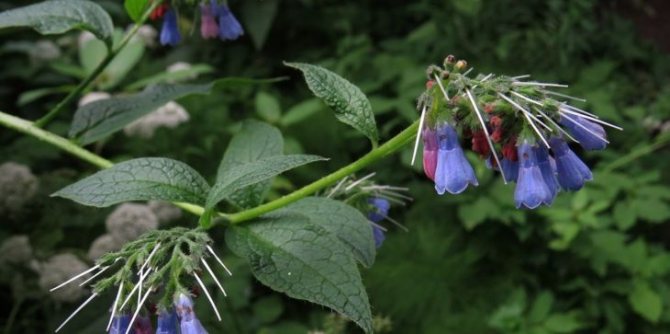

Caucasian comfrey
Tall, profusely flowering species with interesting foliage. Reaches a meter in height, while in a short time forms very dense and very decorative thickets. Unlike other varieties, it has two basic colors - blue and white.
Comfrey large-flowered
There are still discrepancies with the definition of the species status of this species. It is a low-growing shrub that forms compact, but very dense and lush cushions-pillows no more than 30 cm high. The color of the buds is creamy, the flowers bloom in May. Today this species is becoming more and more popular, numerous varieties with white, blue, cornflower blue and even golden inflorescences have been created and continue to be created on its basis.
Hybrid comfrey
In the flower market, it is the main competitor of the previous species. It is slightly taller than it, but it also looks very compact and neat. Forms half-meter powerful and dense bushes. The buds are large, tubular, and can be white, pink or sky blue in color. Flowering is amicable, abundant and long-lasting.


Comfrey tuberous
It stands out against the background of other varieties with its unusual spherical crown and inflorescences uncharacteristic for a kind of inflorescence. Looking at their bright yellow color and very exotic appearance, one can doubt whether this variety belongs to this genus. The roots have tuberous thickenings, which gave rise to the name of the species.
Comfrey officinalis
Not the most decorative variety, considered among the decorative only thanks to the foreign comfrey, which was ranked among this species quite recently. Previously, it was considered as a separate representative of the genus and was raised for livestock feed. In Europe, this lark was named Russian. This perennial has a short rhizome and voluminous oblong leaves on elongated petioles sitting on the stem. Shoot height - up to 1 m. Lilac flowers form an interesting curly inflorescence. Flowering is short-lived and usually ends in June.
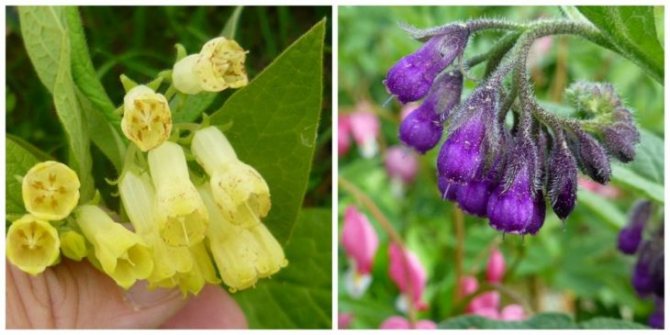

There are decorative varieties of comfrey with foliage covered with variegated spots or with a lighter border.
Joint treatment, comfrey recipe.
Directly for curing joints, there are various preparations containing the extract of this plant, for example:
You can also prepare a tincture at home by digging out comfrey roots in the fall, peeling and chopping them finely. Then all this should be poured with alcohol and in a dark, slightly cool place, let it brew. While the drink is infused, it must be shaken periodically. A week later, this tincture can be used to heal joints. The shelf life of the tincture is limited until the moment when saturated brown begins to predominate in the shade of its color. This color signals that the drink should not be consumed. But while the tincture is transparent, you need to wipe the joint with it.
Treatment of osteochondrosis with comfrey.
If a person suffers from osteochondrosis, then the tincture can be drunk. Take the tincture orally on an empty stomach in three stages:
- they use five days in a row, then ten days of rest, and then again ten days of use;
- at the second stage, another break is made, lasting twenty days, after which the tincture is used again within twenty days;
- the final stage, at which the period of taking the tincture is thirty days.
After a couple of months, the stages of treatment with the tincture can be repeated. This remedy can be used for swelling, joint damage, pain.
There are other ways to make a medicinal drink from comfrey. For example, the roots of a plant are taken, then peeled from excess husk, and then dried. Next, the dried roots are finely chopped and poured with one glass of hot boiled water. This drink must be boiled for at least ten minutes over low heat, and then carefully filtered with gauze. Then you need to let the medicinal drink brew, after which it will be ready for use. It is important to note that comfrey is a poisonous plant, if you exceed its amount in the body, it will cause bad consequences for the nervous system.
Side effects and contraindications.
Comfrey can have a significant impact on the regeneration of human bones, and this is its advantage over other herbal plants. In the event that the bone is destroyed into small particles, a tincture, decoction, ointment or balm with comfrey extract will easily help in the healing of injuries. However, do not get carried away with the use of comfrey, as it is only a medicinal plant. Since comfrey is a poisonous plant, toxicological dangerous consequences can occur in case of an overdose.
When treating joints, healthcare professionals advise using topical ointment. The recipe for this ointment is simple and not difficult to make at home. First, you need to grind the root component of the plant into powder. Then you need to add a small amount of lard in the ratio ¼. Store this ointment in the refrigerator. It is better to use the ointment before bedtime, when the joints will not be loaded with anything. For infusion, you can use a glass of boiling water, previously in a glass, placing one small spoonful of the crushed root, and then let it brew. In medicine, this plant is used in the prevention of more than a hundred diseases. In addition to its medicinal properties, comfrey has a tonic effect, which plays an important role for any person. The result of using the tincture can be improved by adding honey to the decoction.
Growing comfrey
Due to the exceptional unpretentiousness of the comfrey, its cultivation does not present any difficulties. Almost any area is suitable for planting, which can be either completely open to the sun or located in the shade of large-sized trees.
The plant is not demanding for the soil composition, but it will grow worse in acidified, heavy or excessively dry areas.
You should know. Zhivokost is a rather aggressive plant, prone to seizing territories and oppressing other crops. To avoid this, it is necessary to provide a physical barrier at a depth of at least half a meter.In addition, the growth of comfrey is prevented by the periodic mowing of its grass.
Growing area
We have provided a description and photo of the plant. Where does comfrey grow? In total, there are about 17 species of this plant in Russia, but we will focus on the medicinal one. It can be mainly found in Western Asia and Europe, and to be more precise, in Siberia, the Carpathians, on the foothills of the Caucasus, in the Crimea. If you are wondering where the comfrey grass grows, the photos of which were presented above, then you should choose wet places. It can be found in broad-leaved forests, near various water bodies, on the outskirts of swamps, meadows and glades with moist soil, in ravines. In some cases, it can be safely grown even in vegetable gardens and orchards, if watered abundantly.
Landing
Preparing the site for planting includes digging no less than a shovel bayonet, and introducing mature organic matter into it. It can be humus or compost at the rate of 5-6 kg per square meter. Sowing seeds can be carried out in winter or early spring. In the latter case, the seeds must undergo forced stratification in the refrigerator. To do this, they are placed in wet sand and placed in the refrigerator for 1.5-2 months in the vegetable compartment.
Spring shoots are expected to appear 2-3 weeks after sowing the seeds. However, they are rarely abundant and friendly. We'll have to come to terms with the fact that the first year of development will be spent on the formation of the root system and leaf outlet. The first buds will open only next year.
The time of growth and full flowering of comfrey in the same place is 3-4 years.
Harvesting field larkspur
The stem and all its components are cut off during the comfrey bloom - from June to August. At the same time, hemp is left up to 5 cm high. The rhizome is dug up in autumn or early spring. Then the tangled roots and stem at the base are removed, washed with water and cut into small pieces. Still raw materials are laid out under a canopy in the open air or in a dark room with good ventilation. It is better to tie the shoots in bunches and hang them in the attic or in another room with natural ventilation.
You can use electric dryers, where the temperature is set at 50 ° C. After that, the raw materials are packaged in canvas or paper bags and stored in a dry place. The herb retains its usefulness for about two years.
It is recommended to collect larkspur grass away from roads and other air polluting objects. For re-collection, they find another place, since it will be possible to return to the previous one only after two seasons.
Watering
On the one hand, the larkspur is perfectly able to do without watering due to its developed and deep root system. On the other hand, the drying out of the soil leads to an economy of vitality, which, in turn, entails a partial loss of decorativeness and a possible lack of flowering. Therefore, it is worth making sure that in the absence of rain, the soil in the garden bed is not excessively dry, and after precipitation it is advisable to loosen it.
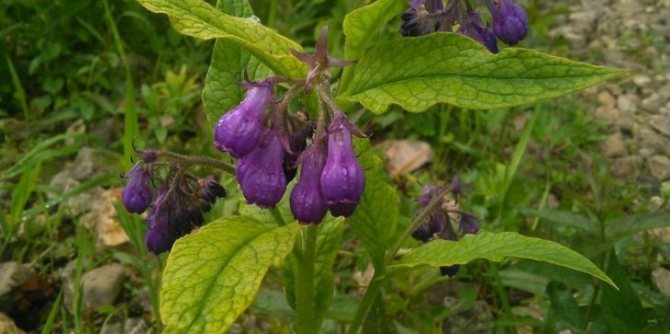

Contraindications
In no case should you use comfrey if you have the following contraindications:
- pregnancy at any time, as well as while feeding the baby;
- it is also not recommended to use it on children - the minimum threshold is set at 7 years, although it is still better not to apply it until the age of majority;
- if you have a hypersensitivity or allergic reaction to the grass itself.
But in any case, comfrey can be used only after consulting a doctor in minimal quantities so as not to harm health. An overdose is very dangerous to them, since it can cause disruption in a number of internal body systems.
Diseases and pests
Zhivokost has a very high resistance to diseases and harmful insects.All the problems that happen to him are usually due to unfavorable conditions of detention. And since the plant is unpretentious, gardeners rarely encounter them. Very rarely, comfrey can be affected by rust, which can be fought with the help of insecticides, after mowing the entire aerial part. Cut shoots should be removed from the garden and burned.
During the season, this plant can be mowed up to 5 times or even more, using the vegetative mass for livestock feed, for mulching plantings or for embedding in the ground during digging.
Modern farmers often consider growing medicinal plants such as comfrey as a business.
Bath, washings and compresses
With chronic suppuration and open ulcerative processes, rinsing and baths with a decoction of the larkspur help. Chronic pathological processes are often found in the elderly, in people who have little exercise, in smokers. In this case, experts recommend a comprehensive solution - baths with a decoction, rinsing and compresses.
A decoction is prepared for all procedures. A glass of crushed raw materials is needed - plant roots, they are poured with two liters of water. The mixture is boiled for ten minutes, insisted for half an hour and filtered. When the broth cools down to a comfortable temperature, the feet or the entire leg are lowered into it. Other parts of the body are thoroughly washed for 5-10 minutes.
Flushing can be painful. In this case, you need to take a towel, thoroughly moisten it in the broth and apply to the affected area. Such a compress must be fixed and removed after half an hour. The affected area after the compress must be lubricated with calendula-based ointment and again the compress from the decoction of comfrey is repeated.
The procedures seem troublesome, but after a short time the patient will feel relief and get rid of wounds that did not heal before for a long time.
In medical practice, there are many cases when, for years, non-healing wounds, immune to pharmaceutical preparations, disappeared after a course of baths and compresses from comfrey and calendula ointment.
Healing properties
The rhizome of the plant, containing mucus, tannins and many other valuable components, which are widely used in folk and official medicine, has healing properties. Preparations based on comfrey root have an astringent, anti-inflammatory effect, have a hemostatic effect and many other healing properties. The main purpose of the rhizome is aimed at treating the osteoarticular system of the human body, with its help they treat arthritis, bone tuberculosis, gout, and relieve inflammation of the periosteum. With the help of a decoction, they alleviate the condition of patients with stomach ulcers and pulmonary diseases.
The most favorable time for harvesting raw materials is early spring or mid-autumn.
The use of herbs in pharmaceuticals
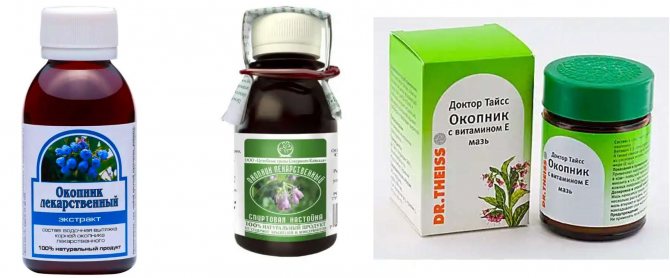

Pharmacy outlets sell different dosage forms based on comfrey
In pharmacies, you can purchase various forms based on the comfrey of the field: dry herbal raw materials, alcohol tincture, elixir, ointments (pure and with the inclusion of other useful components).
The muscle relaxants contained in this plant are used in traditional medicine for the production of the following medicines:
- Condelfin - made of tall larkspur;
- Delsemin - produced from retina larkspur;
- Elatin is an alkaloid obtained from the extract of high larkspur;
- Melliktin - made from a variety of comfrey, as in the previous version.
All of these medications are aimed at relaxing the muscles that are blocked by nerve endings (Parkinson's disease, multiple sclerosis, spastic paralysis).
Potential harm and overdose
When taking herbal remedies with larkspur in the composition above the indicated dosage, serious poisoning is possible, accompanied by a collaptoid state, respiratory depression, cardiac activity, convulsions.
Important! In case of poisoning with alkaloids, the first thing to do is to rinse the stomach, take a laxative and an adsorbent, a cardiotonic agent. In severe cases, an airway should be ensured and mechanical ventilation should be carried out.


Origin
The areola of distribution of the plant covers the entire territory of the European continent, the Caucasus and Western Siberia. It is found in the steppe and deciduous forests, where it chooses peat-rich lands. It prefers moist places along the banks of rivers and reservoirs, grows on flooded meadows, in thickets of bushes and ravines, as well as near gardens and vegetable gardens where there are areas with high humidity.
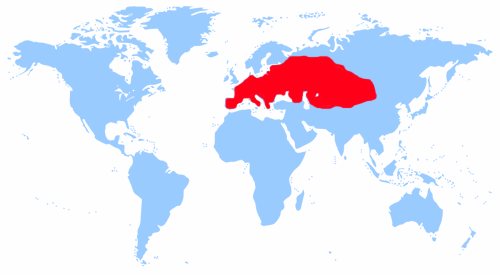

Homeland
Recommendations for the preparation of comfrey infusions
To prepare a medicinal infusion, take 1 tablespoon of finely chopped roots, pour 250 ml of boiling water, cover the container with a lid and leave for 8-9 hours. Then strain the contents, and re-fill the roots with the same amount of boiling water, stand for half an hour, strain through cheesecloth, mix both infusions. The resulting drug is recommended to take 2-3 tablespoons every 3 hours - it helps with respiratory diseases, coughs, sore throat, bronchitis, promotes sputum discharge, relieves inflammation.
How to prepare fresh root comfrey tincture? An alcoholic tincture of comfrey is done as follows: take 100 g of raw material, fill it with a bottle of vodka (0.5 l, 40 degrees of strength). You need to insist the roots for about 2 weeks, after this time, the mixture must be filtered. Such a medicine should be taken orally in 15-20 or 30 drops dissolved in 100 ml of water (frequency - 3-5 times / day). The same composition can be used for rubbing, compresses, lotions for dislocations, bruises, for accelerated healing of bone fractures, for washing wounds (previously diluted with water), rinsing the mouth. This remedy helps with stomach diseases, ulcerative manifestations, renal inflammation, and mastitis (applications).
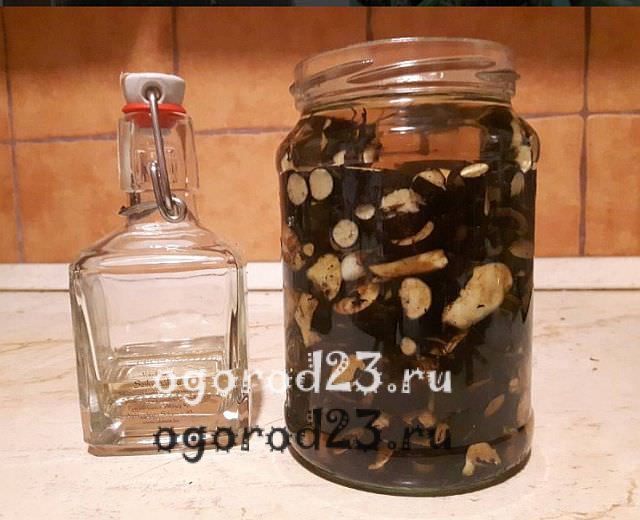

Comfrey root - use as a decoction: 1 tbsp. a spoon is placed in 250 ml of boiling water, cooked over low heat for about 10 minutes, cooled, filtered. The resulting composition is successfully used to treat the ailments described above, plus it is used for douching for "female" diseases, exacerbations of hemorrhoids (after consulting a doctor), inflammatory symptoms of the bladder. This broth is also good for your appearance - skin irritations come to naught, peeling, various kinds of redness are removed. Hair, and especially the scalp, responds well to rinsing with comfrey broth, hair loss is significantly reduced, irritated skin calms down, itching goes away.
Steamed comfrey tincture is an excellent remedy that helps with the previously described misfortunes, even with the complex treatment of pulmonary tuberculosis, its reception often improves overall well-being, accelerates regeneration processes. To prepare it, you will need a regular thermos, 15-20 g of finely chopped roots, 250-300 ml of milk or pure water. The root is placed in a thermos, filled with boiling liquid, and left overnight. Take a steam should be 50 ml, every 2-3 hours.
Plant application
Although larkspur grows like a weed, the beauty of the flowering plant has been appreciated. They began to use it for decoration purposes. It is not beauty at all, but the fragrant pollen of its inflorescences that attracts hardworking bees. Flowers of blue or purple color were used in the distant past to give fabrics an appropriate shade.
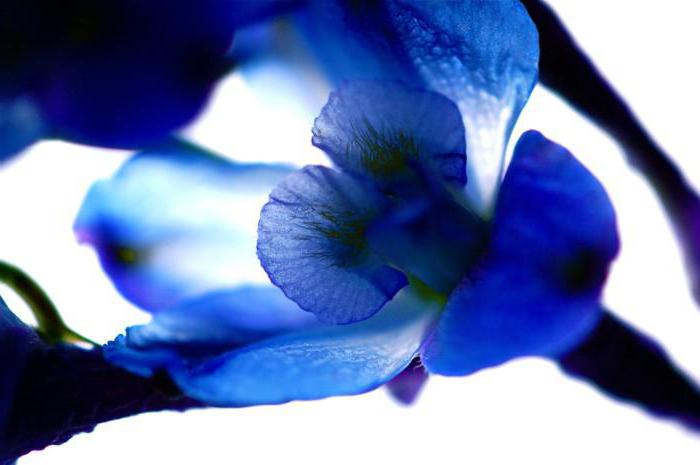

Most of the hundreds of plant species of the genus Larkspur contain poisonous substances, but in the field larkspur, its amount is the smallest. That is why it is most actively used for medicinal purposes. Her decoctions and infusions are used for a variety of diseases.
The chemical composition of the delphinium
Field pickers include a number of substances that, if used correctly, can be used to treat extremely dangerous diseases. It has now been established that delphinium contains a lot of varieties of natural alkaloids. Larkspur field includes the following active substances:
- delartine;
- dolbin;
- delatin;
- delcosin;
- halo;
- eldelin;
- dolphin;
- delsimine;
- dictyocarpine;
- dolphin;
- delsolin;
- elatin;
- consolidin;
- dolphelatin;
- dolphin;
- deltamine;
- methyllycaconitine;
- condelphin.
Common types
The genus includes about 20 species of comfrey. Here is some of them:
- Comfrey hard or rough (Symphytum asperum)
- Caucasian (Symphytum caucasicum)
- Heart-shaped (Symphytum cordatum)
- Medicinal (Sýmphytum officinále)
- Crimean (Symphytum tauricum)
- Tuberous (Symphytum tuberosum)
- Large comfrey (Symphytum grandiflorum)
- Hybrid with a bush height of 45 cm
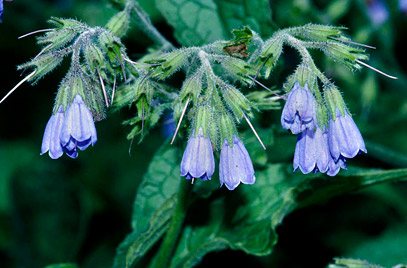

Symphytum caucasicum
Where can you meet
Larkspur grows in many countries, chooses places with calcareous soil. Bright flowers are often seen among grain fields, in grassy meadows and along roads. Each year, the plant can appear in a new place.
Quite often you can hear completely different names of it, for example: "horned cornflowers", "burgundy", "field pickers", but it seemed to someone that one could call the plant bunny ears. If you want to make valuable medicinal preparations with your own hands, you need to accurately determine what the field larkspur looks like. The photo below is a larger image of a flowering plant.
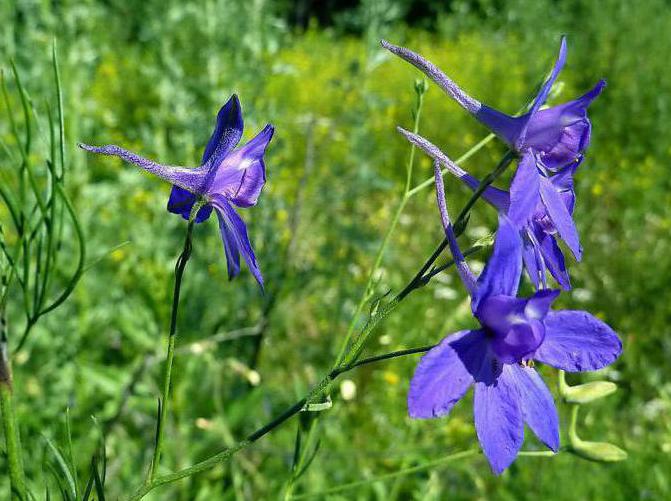

Is the toxic effect of larkspur on the body dangerous?
Studies have confirmed that all parts of the plant contain poisonous alkaloids, and their quantity is always changing. It depends on the type of plant, and on the place of growth, and on the season.
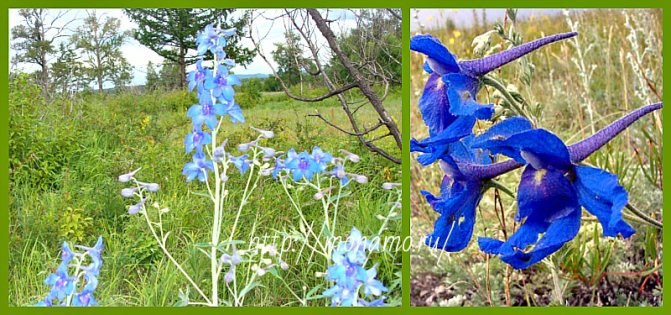

This plant is a field livestock, attributed by scientists to dangerous poisonous plants that cause depression of the central nervous system. Scientists claim that the effect of the poison extends not only to the respiratory system, but also to the stomach and heart. Since, in history, there are cases when eating these flowers, sheep and cows were poisoned.
Among all the numerous genus of Delphiniums, garden forms of plants are considered especially dangerous. There are forms that contain poison even in pollen, causing poisoning of bees, called nectar toxicosis. This poisoning is similar to drunkenness (this is exactly what I observed). Bee poisoning can be both reversible and lethal.
This is such a paradox, such a mistake of nature. Delphiniums are pollinated by bees and bumblebees, which, collecting nectar, can die from the poison of these plants. Large forms of delphiniums native to Africa are pollinated by the small hummingbird.
By the way, honey is sometimes "drunk", this happens when the bees still carry the nectar of larkspur to their honeycombs. Such honey is considered poisonous.
Symptoms of larkspur poisoning
Poisoning causes severe salivation, nausea and vomiting, burning sensation in the larynx and mouth, convulsions that reduce one or the other muscle groups, which is replaced by general muscle weakness. And from this weakness, both the heart and breathing can stop (respiratory paralysis).
On contact with the garden delphinium, skin burning and itching may appear, so it is better to use rubber gloves when caring for this plant.
Help with poisoning
With such poisoning, if it is internal, then you can wash the stomach and take an enveloping liquid, you can jelly. In medical institutions, a person is given activating substances that stop the effect of a poison, for example: tannin, and later cardiac medications are prescribed.
If, upon contact with the plant, rashes, redness, itching and burning appear on the skin, immediately rinse the skin with running water and apply a bandage to the affected area with syntomycin emulsion.Be sure to see a doctor.
Gallery: larkspur (25 photos)
Botanical characteristics of larkspur
Depending on the type and place of growth, the field delphinium can reach from 10 to 300 cm in height. Some varieties of this plant are distinguished by high decorative characteristics, therefore they are actively used in floriculture. At the same time, the vast majority of species are wild-growing. The larkspur field received its popular names because of the special type of flowers that reminded people of the outlines of the body of a dolphin, a spur and a pick. The delphinium has a very large root that can go more than 1 m deep. It is usually straight and long.
Reviews of the medicinal properties of the plant
Comfrey (larkspur) roots help with vertebral hernia. It is necessary to make a compress from the tincture at night. It will get easier in the morning. If it burns, you can remove it after 3 hours. It helps a lot to relieve pain. I experienced it myself.
Myra
I make the larkspur tincture myself - it helps in the treatment of knee and elbow joints. I also add diclofenac inside.
Igor
Seasonal severe joint pains began, against which the temperature rises in the evenings. The ingestion of a water infusion of larkspur helped: for 600 g of water 1 tbsp. spoon of root. I take 100 grams of infusion per day and the pain went away after the second dose.
Lena
Larkspur is a valuable medicinal plant, which is also grown in personal plots as an ornamental plant. The only thing is that because of its toxicity, children and pets should be protected from access to the plant.
Field larkspur is an annual plant of the buttercup family that grows throughout Eurasia. It grows in Russia, Ukraine and Belarus, the foothills of the Caucasus and the Carpathians, in Western Siberia and even in North America. Larkspur is not demanding on the soil and the growing environment: it can often be found along roadsides, in fields, meadows and forests, in forest belts and plantings, in wastelands and flower beds. It is popularly called comfrey or spur because of its spur-shaped flower.
What diseases can be cured with comfrey drugs
From the roots and flowers of comfrey, drugs are prepared for the treatment of a wide range of diseases: dysfunctions of the spine, hernia, inflammation of the organs of the genitourinary system, normalization of the functioning of the heart, liver and pancreas.
Ointments, tinctures and other dosage forms for the treatment of diseases are prepared from comfrey plant materials, but it is worth remembering that traditional medicine medicines are not an absolute panacea that can cure absolutely any disease, therefore, before using comfrey preparations, you need to consult with your doctor, remembering existing contraindications.
Attention! Only a doctor can prescribe the dosage of comfrey preparations so that the treatment will lead to a speedy recovery.
The use of delphinium for household needs
The concentrated infusion of the plant and the seed powder in folk medicine is used to combat garden pests and domestic insects: leaf-eating beetles, butterflies (cabbage, whiteberry, apple honeydew, hawthorn, etc.), caterpillars, moths, cockroaches, flies ...
Spray infusion. On a bucket of water, 1 kg of green mass of delphinium is taken, it is infused for a day, after which it is necessary to dissolve 100 g of household soap in this infusion. Spray all plants with infusion for protection.
Powder for pests. Dry grass is ground into powder. mix with ash in a ratio of 1: 3 and dust the plants with this mixture. It is necessary to work in a respirator or with a wet bandage on the face.
Antiparasitic agent. Larkspur seeds are ground into powder and applied to the hair. The dose is determined individually.
The magical properties of the field larkspur
There is such a sign among the people that if a delphinium flower is dreamed of in a dream, this is a sign of a successful marriage and finding loyal and reliable friends.
In the old days, a dry inflorescence of larkspur was attached above the front door, in order to protect it from ghosts and evil guests and ill-wishers.
And flowers sewn under the lining were considered reliable protection from the evil eye and damage. Flowers were also placed under the pillow, for a restful sleep and getting rid of nightmares.
Precautions and contraindications
Poisonous plants must be handled with great care, with precise dosages. Treatment, (especially when taken internally), should be carried out under the supervision of a physician. It must be remembered that an overdose of poisonous alkaloids causes paralysis of the central nervous system and respiratory arrest.
Do not use larkspur preparations for myopathy and myasthenia gravis (diseases with decreased muscle tone), with hypotension, impaired liver and kidney function, heart disease and pregnancy.
Care must be taken when storing dry raw materials if there are small children and animals in the house.
The blog articles use pictures from open sources on the Internet. If you, suddenly, see your author's photo, inform the blog editor about it via the Feedback form. The photo will be removed, or a link to your resource will be placed. Thank you for understanding!

